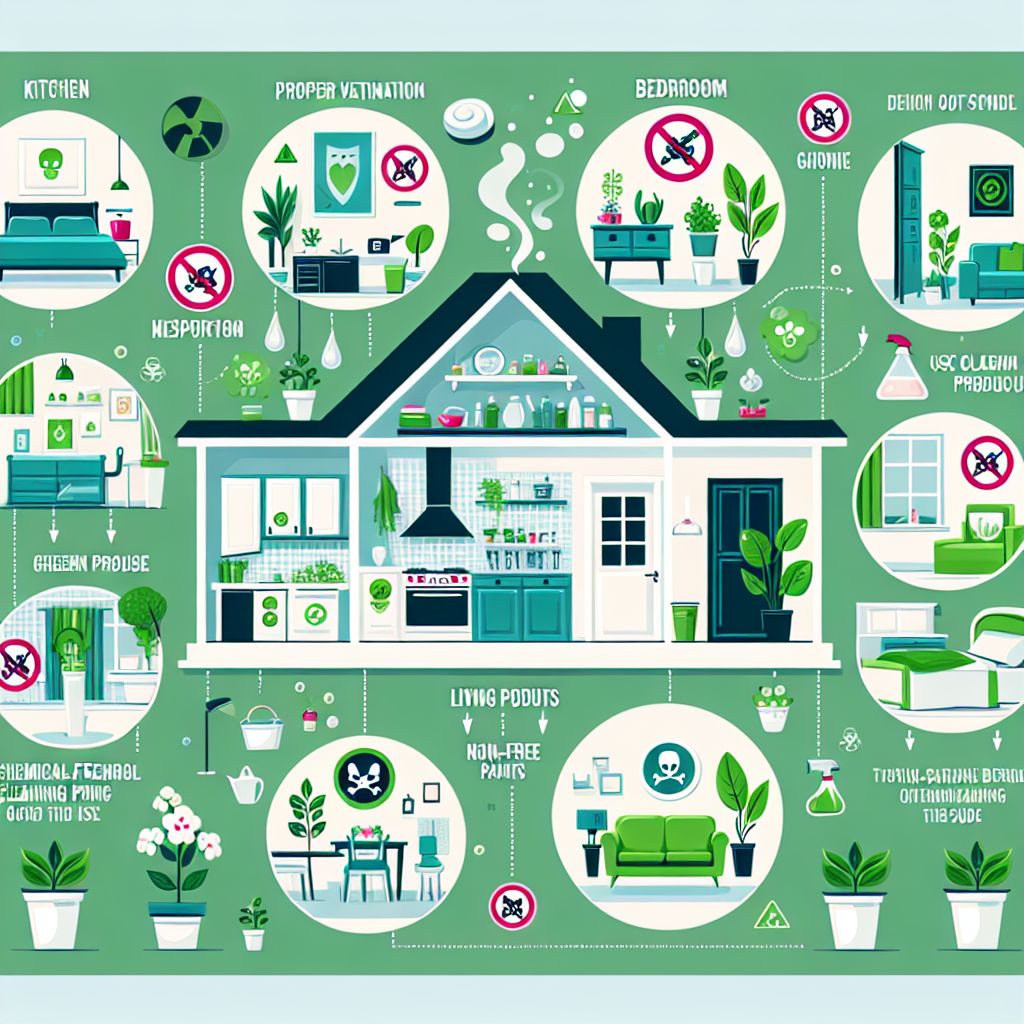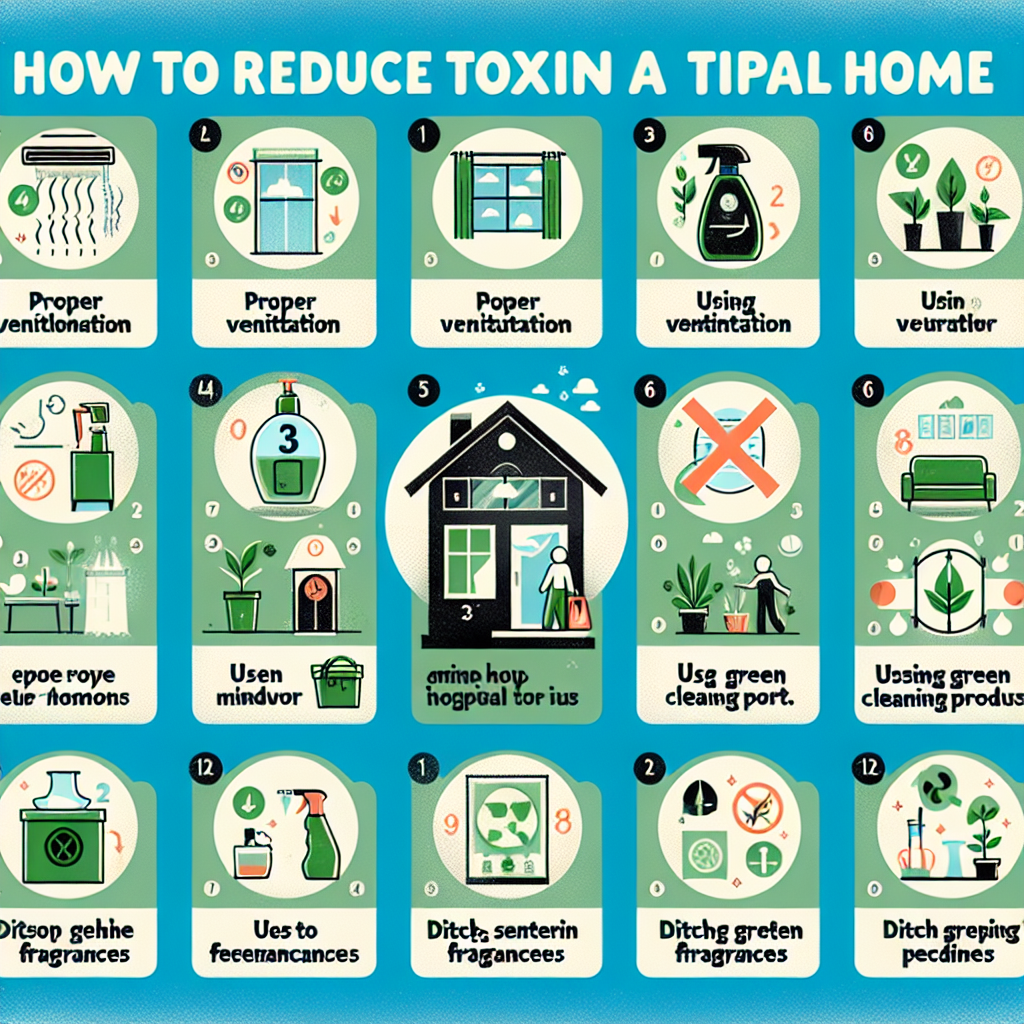How to Reduce Toxins in Your Home

Start making your home a healthier place today! Learn how to reduce toxins in your home by visiting My Vibrant Vitality. Take the first step towards a toxin-free environment now!
Effective Strategies for Minimizing Toxin Exposure in Your Home
The home is often considered a sanctuary, a safe haven where we retreat from the hustle and bustle of the outside world. However, unbeknownst to many, our homes can also be a breeding ground for various toxins that can negatively impact our health. From the air we breathe to the surfaces we touch, toxins can be lurking in the most unexpected places. Fortunately, there are effective strategies for minimizing toxin exposure in your home.
Firstly, it’s important to understand that toxins can come from a variety of sources. Common household items such as cleaning products, air fresheners, and even certain types of furniture can release harmful chemicals into the air. These chemicals, known as volatile organic compounds (VOCs), can cause a range of health problems, from headaches and dizziness to more serious conditions like asthma and cancer. Therefore, one of the most effective ways to reduce toxins in your home is to choose products that are free from VOCs. Look for cleaning products that are labeled as ‘green’ or ‘natural’, and opt for furniture made from solid wood rather than particle board, which often contains formaldehyde.
Transitioning to the kitchen, it’s crucial to be aware of the potential toxins that can be found in cookware. Non-stick pans, for instance, can release toxic fumes when overheated. To avoid this, consider using stainless steel or cast iron cookware instead. Similarly, plastic containers can leach harmful chemicals into food, especially when heated. Glass or stainless steel containers are a safer alternative for food storage.
Another effective strategy for reducing toxins is to improve the air quality in your home. Indoor air can be up to five times more polluted than outdoor air, according to the Environmental Protection Agency. One way to combat this is by introducing houseplants into your living space. Certain plants, such as spider plants and peace lilies, are known for their air-purifying abilities. Additionally, consider investing in a high-quality air purifier, particularly one with a HEPA filter, which can remove up to 99.97% of airborne particles.
Furthermore, dust can be a major source of toxins, as it can contain everything from lead to pesticide residues. Regular cleaning is essential to keep dust levels in check. Use a damp cloth for dusting, as it’s more effective at trapping dust than a dry one. Also, vacuum regularly, ideally with a vacuum cleaner that has a HEPA filter.
Lastly, be mindful of the toxins that can be brought into your home on shoes and clothing. A simple solution is to adopt a no-shoes policy indoors. This not only keeps your floors cleaner, but also reduces the amount of toxins that are tracked in. Similarly, wash new clothing before wearing it to remove any residual chemicals from the manufacturing process.
In conclusion, while it’s impossible to completely eliminate toxins from our homes, there are many steps we can take to significantly reduce our exposure. By making conscious choices about the products we use, improving our indoor air quality, keeping our homes clean, and being mindful of what we bring into our homes, we can create a healthier and safer living environment. Remember, every small change can make a big difference in reducing toxins in your home.
The Ultimate Guide to Reducing Household Toxins

The modern home, while a haven of comfort and convenience, can also be a hotbed of toxins that can harm your health and well-being. From the air we breathe to the surfaces we touch, toxins can be found in various forms and places within our homes. However, with a few simple steps, you can significantly reduce the level of toxins in your home and create a healthier living environment.
Firstly, let’s consider the air quality in our homes. Indoor air can be up to five times more polluted than outdoor air, according to the Environmental Protection Agency. This is due to a variety of factors, including dust, mold, pet dander, and volatile organic compounds (VOCs) emitted by certain household products. To combat this, consider investing in a high-quality air purifier. These devices can filter out many of the harmful particles and gases in your home’s air. Additionally, regularly opening windows to allow fresh air in can also help to improve indoor air quality.
Next, let’s turn our attention to household cleaning products. Many of these products contain harsh chemicals that can be harmful to both our health and the environment. To reduce your exposure to these toxins, consider switching to natural, eco-friendly cleaning products. These products are made from plant-based ingredients and are free from harmful chemicals. Alternatively, you can make your own cleaning products using common household items like vinegar, baking soda, and lemon juice.
Another significant source of toxins in the home is the materials used in furniture and home decor. Many furniture pieces are made with synthetic materials that can release harmful gases over time. When shopping for new furniture, look for pieces made from natural materials like wood, cotton, and wool. These materials are not only healthier but also more sustainable.
In addition to furniture, consider the materials used in your home’s flooring. Carpets, for example, can trap dust and allergens, and some types of carpeting can also emit VOCs. Hardwood or tile flooring is a healthier choice, as these materials do not trap allergens and do not emit harmful gases.
Lastly, consider the quality of your home’s water. Tap water can contain a variety of contaminants, including lead, chlorine, and pesticides. To ensure that your water is safe to drink, consider installing a water filtration system. These systems can remove a wide range of contaminants, providing you with clean, safe drinking water.
In conclusion, while it may seem daunting to reduce the level of toxins in your home, it is a task that is well worth the effort. By taking steps to improve your home’s air quality, choosing natural cleaning products and materials, and ensuring that your water is safe to drink, you can create a healthier and safer living environment for you and your family. Remember, every small change can make a big difference in reducing household toxins.
Creating a Healthier Living Space: How to Reduce Toxins in Your Home
Creating a healthier living space is a goal that many of us strive for, but it can often seem like a daunting task. One of the most effective ways to achieve this is by reducing the amount of toxins in your home. Toxins can come from a variety of sources, including cleaning products, furniture, and even the air we breathe. However, with a few simple changes, you can significantly decrease the level of toxins in your home and create a healthier environment for you and your family.
Firstly, consider the cleaning products you use. Many conventional cleaning products are filled with harmful chemicals that can be detrimental to your health. Instead, opt for natural, non-toxic alternatives. You can even make your own cleaning products using ingredients like vinegar, baking soda, and essential oils. Not only are these options safer for your health, but they are also better for the environment.
Next, take a look at your furniture. Many pieces of furniture are made with synthetic materials that can release toxins into the air over time. When shopping for new furniture, look for pieces made with natural materials like wood, cotton, or wool. If buying new furniture isn’t an option, consider using slipcovers made from natural materials to cover your existing furniture.
The air quality in your home is another important factor to consider. Indoor air can often be more polluted than outdoor air due to the presence of toxins from cleaning products, furniture, and other sources. To improve the air quality in your home, consider investing in an air purifier. These devices can remove toxins from the air and help to create a healthier living environment. Additionally, opening your windows regularly to let in fresh air can also help to reduce the level of toxins in your home.
Houseplants can also play a role in reducing toxins in your home. Certain plants, like spider plants and peace lilies, are known for their ability to purify the air. They absorb toxins and release clean oxygen, helping to improve the air quality in your home. Plus, they add a touch of natural beauty to your living space.
Lastly, be mindful of the products you bring into your home. Many products, from candles to cosmetics, can contain harmful chemicals. Always read labels carefully and opt for products made with natural ingredients whenever possible.
In conclusion, reducing toxins in your home is a multi-faceted process that involves examining the products you use, the furniture you have, and the air you breathe. By making a few simple changes, you can create a healthier living space for you and your family. Remember, every small step you take towards reducing toxins in your home can have a significant impact on your overall health and well-being. So, start today and make your home a healthier place to live.